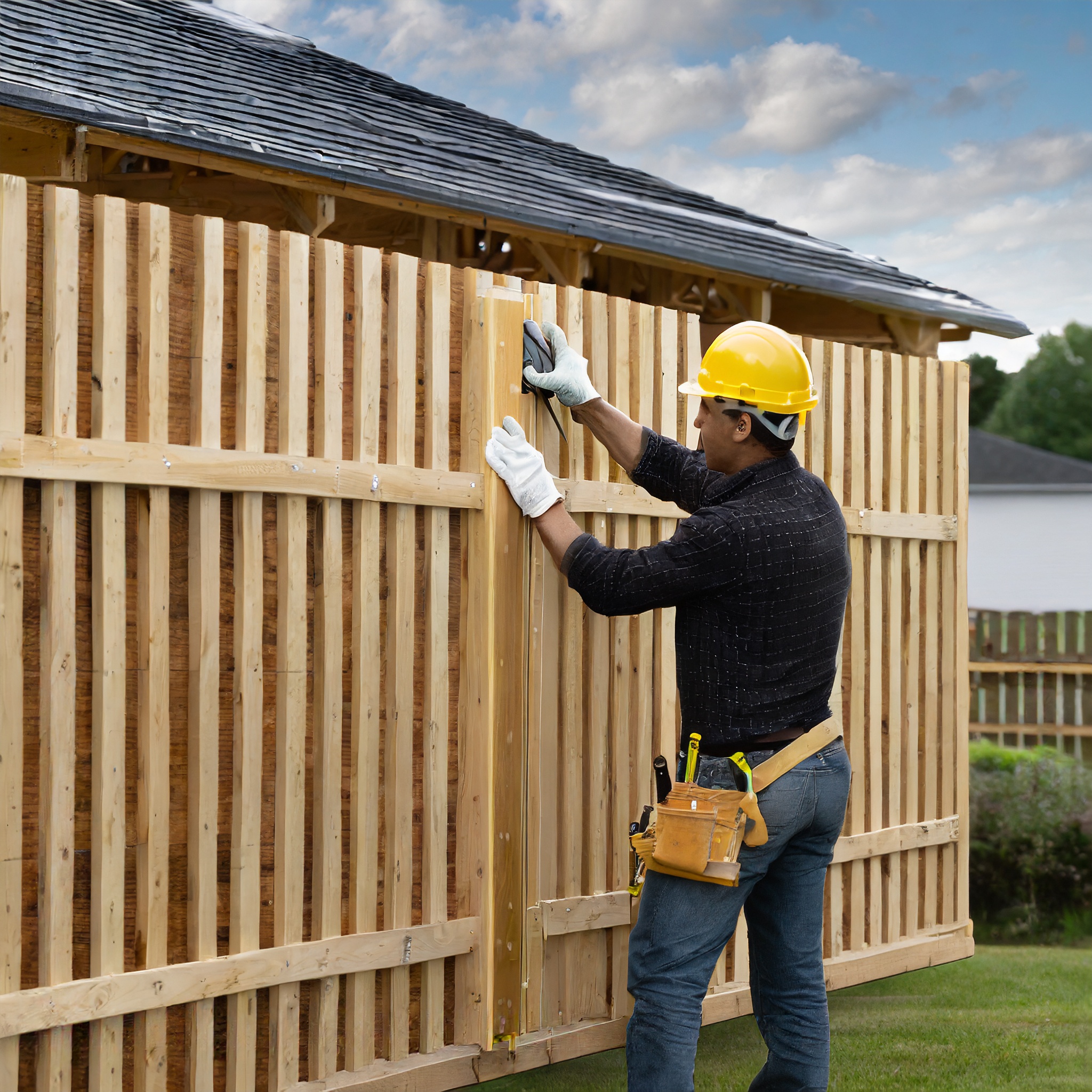Wood Fence Installation
Wood fences have long been cherished for their classic look and the way they seamlessly blend with natural surroundings. As we consider the multitude of fencing options available, wood fences stand out for their unique combination of aesthetic appeal, functionality, and their contribution to the natural environment.
They serve not only as a boundary and privacy screen but also enhance the look and feel of a property.
When it comes to maintenance, wood fences are notably manageable. Homeowners can often handle minor repairs, such as replacing a damaged board, and routine cleaning can be accomplished with basic household products.
Additionally, wood fences offer cost benefits. They are affordable in terms of materials and can be less expensive to install compared to other fence types.
The inherent flexibility of wood also allows for a vast array of design choices, providing homeowners the ability to customize their fences to their taste and the architecture of their homes.
Key Takeaways
- Wood fences enhance property aesthetics while providing privacy.
- They are cost-effective and offer easy maintenance and repair.
- Wood provides flexibility in design, allowing for extensive customization.
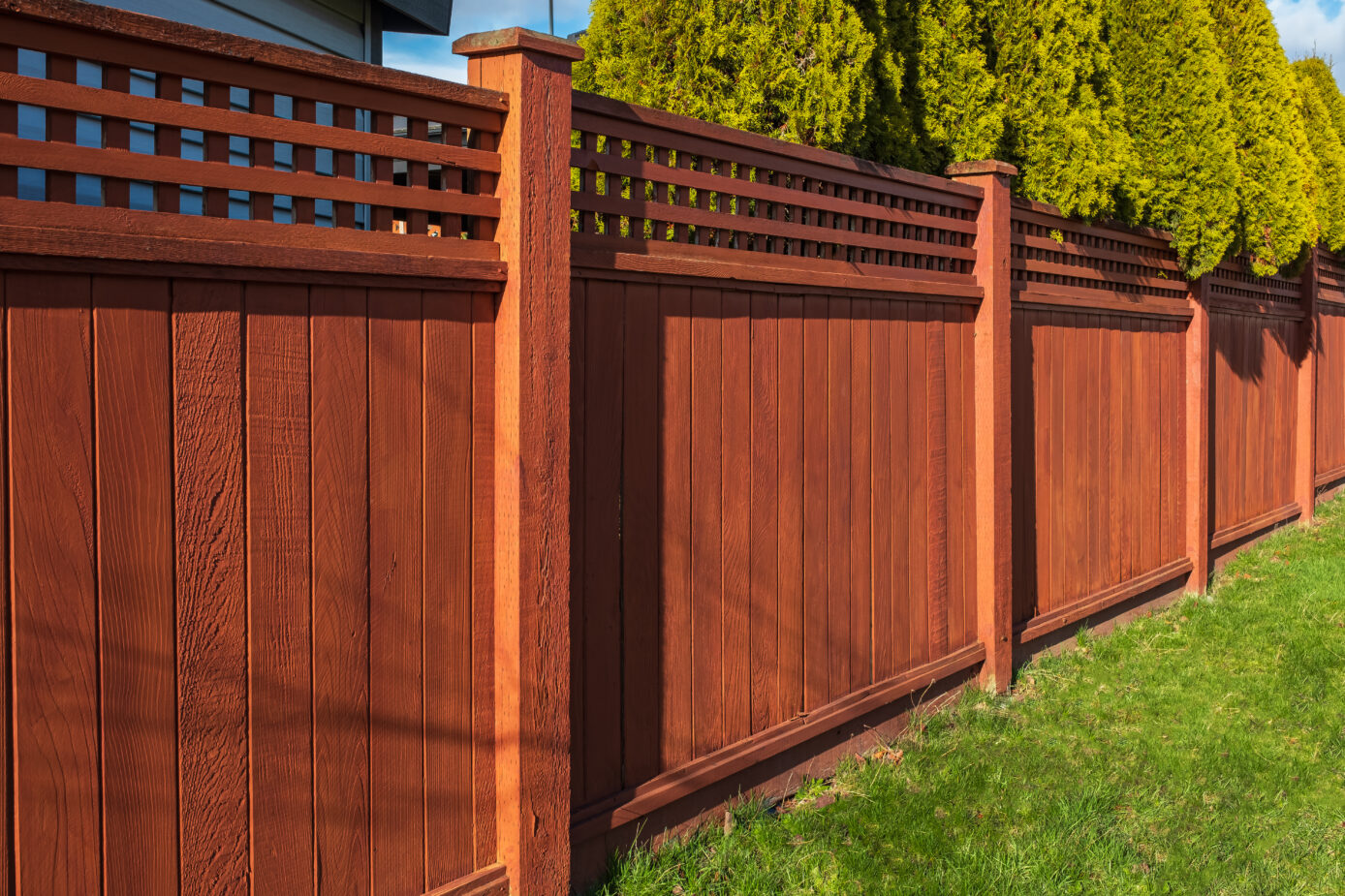
Natural Appeal and Aesthetics
In discussing the visual impact of wood fences, we note their profound ability to blend natural appeal with wide-ranging aesthetic versatility.
Aesthetic Appeal
We recognize the timeless beauty of wood fences, as they offer an aesthetic charm that enhances various architectural styles.
Whether it’s the classic picket fence that evokes a sense of nostalgia or more modern designs, the natural grains and textures provide a unique character to every panel.
Options like cedar and redwood not only offer durability but also display a rich array of colors and can be painted or stained to match any palette.
Natural Beauty
The inherent appeal of wooden fences lies in their natural beauty. Each board carries the unique markings of its origin tree – an authenticity that complements the living landscape of any outdoor space.
Cedar and redwood fences bring their own natural resistance to decay, and their lovely patina matures with age, reflecting the very essence of nature in our yards.
Versatility in Design
Our choices in wooden fence styles are virtually limitless. Whether we desire a cozy, rustic ambiance or a sleek, contemporary boundary, the versatility in design that wood offers is unmatched.
We can readily tailor designs to suit a variety of preferences, keeping each structure in harmony with its surrounding environment.
| Common Wood Types | Design Flexibility | Popular Styles |
|---|---|---|
| Cedar | High | Picket, Privacy, Shadow Box |
| Redwood | Moderate | Lattice, Louvered |
| Pressure-Treated Pine | Moderate | Rail, Post-and-Rail |
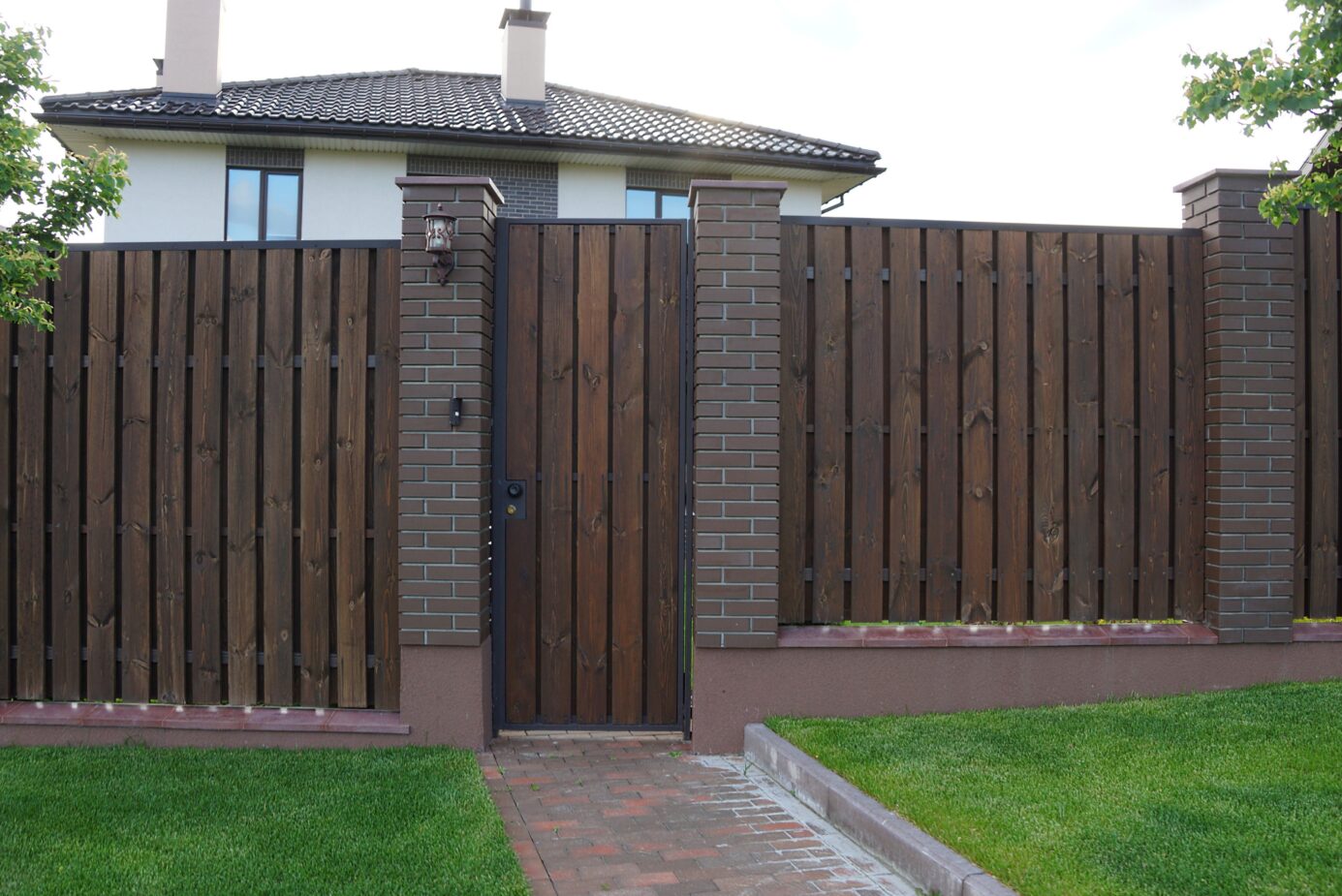
Complementing Landscaping
Integrating a wooden fence within our outdoor spaces does more than mark boundaries — it acts as a natural extension of our landscaping.
Strategic placement of fences can frame garden areas, highlight ornamental plants, or provide a backdrop for dramatic outdoor lighting.
A thoughtfully chosen wood fence complements the greenery and blooms, creating a cohesive and visually appealing exterior space.
Environmental Impact
When selecting fencing materials, we consider the environmental impact, focusing on how eco-friendly, sustainable, and renewable the resources are. Wood, as a natural material, showcases these attributes, implicating a positive influence on the environment.
Eco-Friendly Material
Wood is a renewable resource that serves as an eco-friendly option for fencing. It stands out for its natural resistance to certain weather conditions, which, depending on the species, can reduce the need for chemical treatments.
By choosing wood from sustainably managed forests, we ensure the use of a sustainable material that supports environmental balance.
Sustainability of Wood
Sustainability is at the heart of wood sourcing. Forests that are responsibly managed allow us to use wood as a sustainable resource, with policies in place to ensure replacement of trees that are harvested.
This approach not only satisfies our current needs but also secures resources for future generations without depleting the ecosystem.
- Sustainably Managed Forests: Maintain ecological balance
- Tree Harvesting: Coupled with replanting initiatives
- Biodiversity: Protected through controlled forestry practices
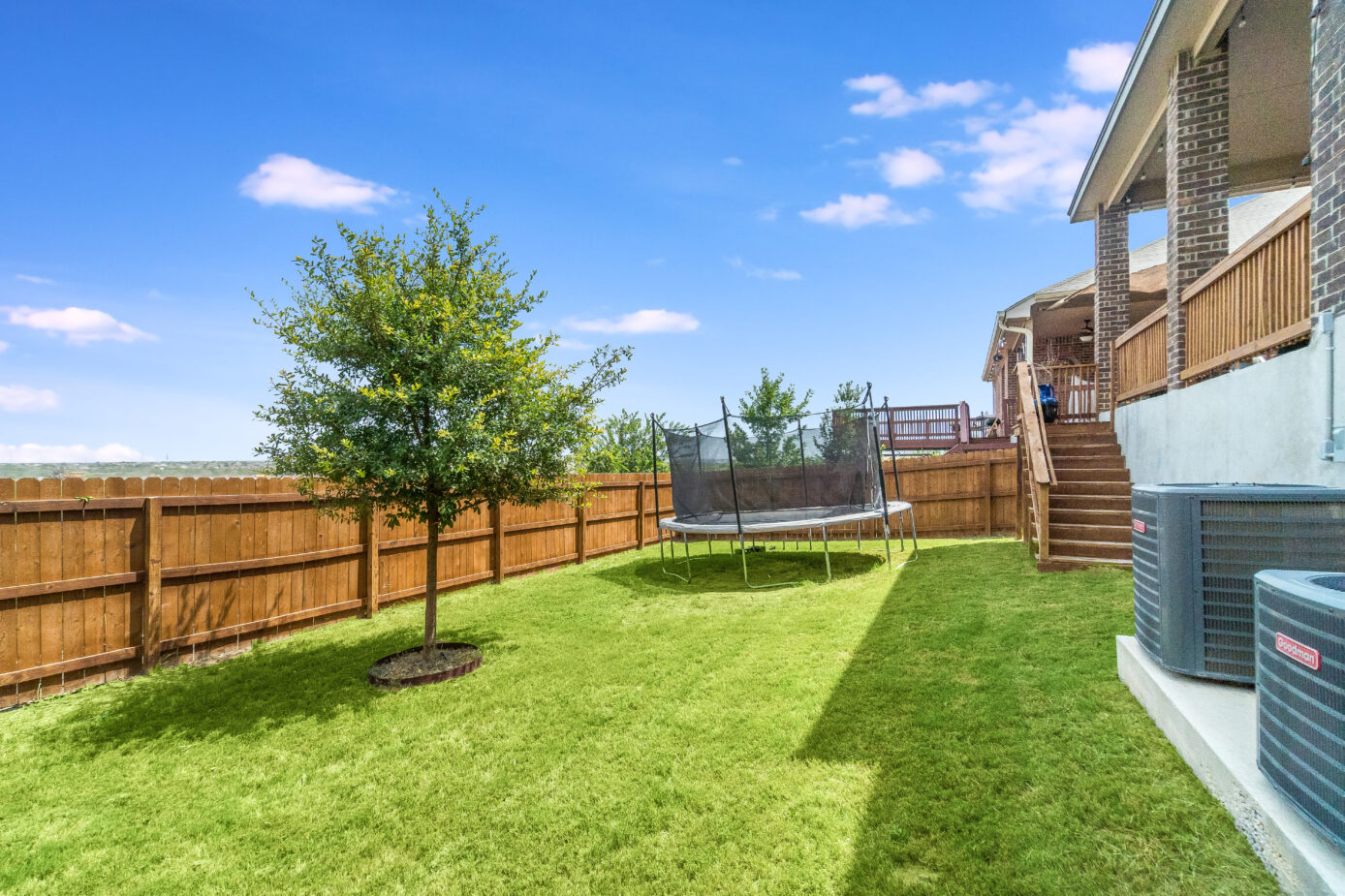
Reduced Carbon Footprint
Wood’s ability to store carbon contributes to a reduced carbon footprint, making it an environmentally friendly choice.
Unlike other materials that require high energy for production, wood processing has lower energy consumption levels, which correlates to lower greenhouse gas emissions.
| Material | Energy Consumption | Greenhouse Gas Emissions |
|---|---|---|
| Wood | Lower | Lower |
Privacy and Security
When we talk about wood fences, we’re addressing two critical aspects: enhancing the privacy of our properties and bolstering security measures to keep our families and pets secure.
Enhanced Privacy
Wood fences stand out as a robust barrier, providing us with a private space where visibility from the outside is significantly reduced. This fortification allows us to enjoy our backyards without concern for prying eyes.
Here are specific ways wood fences cater to our need for privacy:
- Solid Paneling: The design of wood fences, with their close-set boards, ensures a secluded environment.
- Custom Heights: We can choose from various fence heights, creating a custom barrier tailored to the privacy needs of our homes.
Improved Security for Homeowners
Not only does a wood fence enhance privacy, but it also contributes to the safety of our homes, marking clear boundaries and deterring unauthorized access. Here’s how these fences work to improve our security:
- Durable Construction: Wood fences are built solidly, making it challenging for intruders to breach.
- Barriers for Children and Pets: By installing a wood privacy fence, we create a safe enclosure, preventing children and pets from wandering off the property.
Durability and Maintenance
When considering a wood fence, two critical factors to emphasize are its inherent durability and the simplicity of its upkeep. We understand that a fence is a long-term investment, which is why we provide insights into maximizing longevity through proper maintenance and how to efficiently handle repairs.
Longevity of Wood Fences
Wood fences, when well-maintained, can last for decades. The type of wood is a significant factor in durability; cedar and redwood, for instance, are naturally resistant to rot and pests.
Regular treatment with stains or sealants further enhances a wood fence’s resilience to environmental stressors.
Ease of Repair
One of the substantial advantages of wood fences is the ease with which they can be repaired. Individual boards or panels can be replaced without disturbing the integrity of the entire structure.
This modular repair approach allows us to address issues promptly and cost-effectively.
Regular Maintenance Tips
Weekly:
- Inspect for signs of damage or rot.
- Clean debris from the fence surface.
Monthly:
- Check for loose nails or screws; tighten as necessary.
Yearly:
- Perform a thorough cleaning with a mild detergent and water.
- Apply a new coat of stain or sealant to protect from UV rays and moisture.
Cost-Effectiveness
When considering fencing options, cost-effectiveness is a principal factor. We recognize the importance of balancing quality with expense, and wood fencing strikes a favorable balance.
Comparison with Other Fencing Materials
Vinyl Fencing: Though durable and low maintenance, vinyl fences typically come with a higher price tag, both in terms of materials and installation costs.
| Material | Initial Cost | Maintenance Cost | Longevity |
|---|---|---|---|
| Wood | $ | $$ | 10-20 years |
| Vinyl | $$ | $ | 20-30 years |
Aluminum Fencing: Similar to vinyl, aluminum is a cost-effective option for longevity but requires a greater upfront investment.
The costs can be justified by its durability and minimal maintenance needs, but the higher initial expense is a consideration.
Cost-Effectiveness: We find wood fencing to be comparatively cost-effective, not only due to its lower initial costs but also because of the customary labor costs associated with installation. It stands as a financially viable option for those on a budget without compromising aesthetic appeal.
Customization and Flexibility
Wood fencing stands out for its customizability and flexibility. These features allow us to tailor fences to unique aesthetic preferences and practical requirements.
Diverse Wood Fence Styles
We can choose from an array of wood fence styles to match different architectural themes or personal tastes.
The most popular wood fence styles include:
- Picket fences: Ideal for adding charm to your home while marking property boundaries.
- Board-on-board: Offers full privacy with overlapping boards, and showcases a distinct pattern.
Each style serves its purpose, whether it’s for privacy, decoration, or security, providing us with the design options to find the perfect match for our landscape.
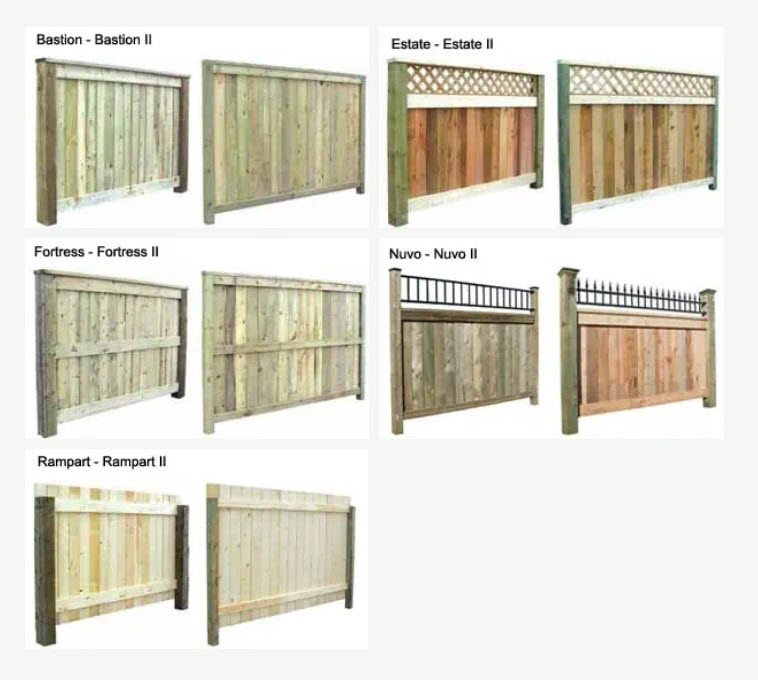
Adaptability to Various Climates
Wood fencing materials are naturally resilient and can be adapted to different environmental conditions. Here’s how various types of wood fare in different climates:
| Type of Wood | Climate Suitability |
|---|---|
| Cedar | Excellent in humid climates due to its rot resistance |
| Redwood | Ideal for wet conditions because of its natural oils |
| Pressure-treated | Versatile for various climates, thanks to its treatment against rot, decay, and insects |
Color Customization Options
Our wood fence can be a canvas for our creativity. We have numerous color customization options:
- Stains: We can apply different stains to enhance the natural wood grain or to match our home’s exterior.
- Paint colors: Bold or subtle paint colors are available to make our fence stand out or blend in.
By using stains or paints, we not only customize the color, but we also add an extra layer of protection against the elements. This makes maintenance easier.
Additional Considerations
Before delving into specifics, it’s crucial to understand that the materials and design of a fence significantly impact your property’s value and aesthetic appeal.
Property Value and Curb Appeal
We recognize that a wood fence can positively affect property value. Potential buyers often see it as a desirable addition due to its natural aesthetic and the privacy it provides. On the other hand, curb appeal is enhanced by the rustic charm a wood fence adds, giving the property a warm, welcoming vibe.
- Privacy: Increased with the right fence height.
- Aesthetics: Wood’s natural look complements various architectural styles.
Comparing Wood to Composite Materials
When we compare wood to composite fencing materials, several factors come to play:
| Aspect | Wood | Composite |
|---|---|---|
| Cost | More affordable upfront. | Higher initial cost, but less maintenance. |
| Maintenance | Requires regular upkeep such as staining. | Minimal maintenance needed. |
| Durability | Can be subject to rot or insect damage. | Resists rot and pests, often lasting longer. |
| Aesthetics | Unmatched natural appeal. | Attempts to mimic wood’s appearance. |
| Environment | Renewable resource, biodegradable. | Made from recycled materials, eco-friendly. |
Choosing between wood and composite comes down to prioritizing immediate cost savings and aesthetics or long-term durability and reduced maintenance.
Conclusion
In our exploration of wood fencing, we’ve identified a breadth of benefits that underscore its enduring popularity.
Our analysis reveals that wood fences excel in both functionality and aesthetic appeal. They serve as a testament to the harmonious blend of practicality with the natural beauty of wood.
Key Benefits Briefly Noted:
- Cost-effectiveness: We find that choosing wood for fencing is often more economical compared to other materials. It offers savings in both materials and installation costs.
- Aesthetic appeal: The rustic charm of wood fencing enhances the visual character of a property.
- Increased property value: A well-constructed wood fence adds to the marketability of a property, attracting potential buyers.
- Environmental advantages: Embracing the eco-friendly nature of wood, these fences are a sustainable choice. This is because of the material’s renewable and biodegradable properties.
From our perspective, wood fences stand out for their ability to merge traditional appeal with modern needs. They provide privacy, delineate boundaries, and contribute positively to the environment.
Our collective experience affirms that homeowners who choose wood fencing are investing in a solution that offers both immediate and long-term rewards.
It’s our position that within the realm of fencing options, wood fences hold their own thanks to their multi-faceted benefits.
Whether it’s enhancing curb appeal or providing a cost-effective solution, wood fences are a robust option that we find deserves consideration.

